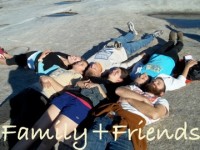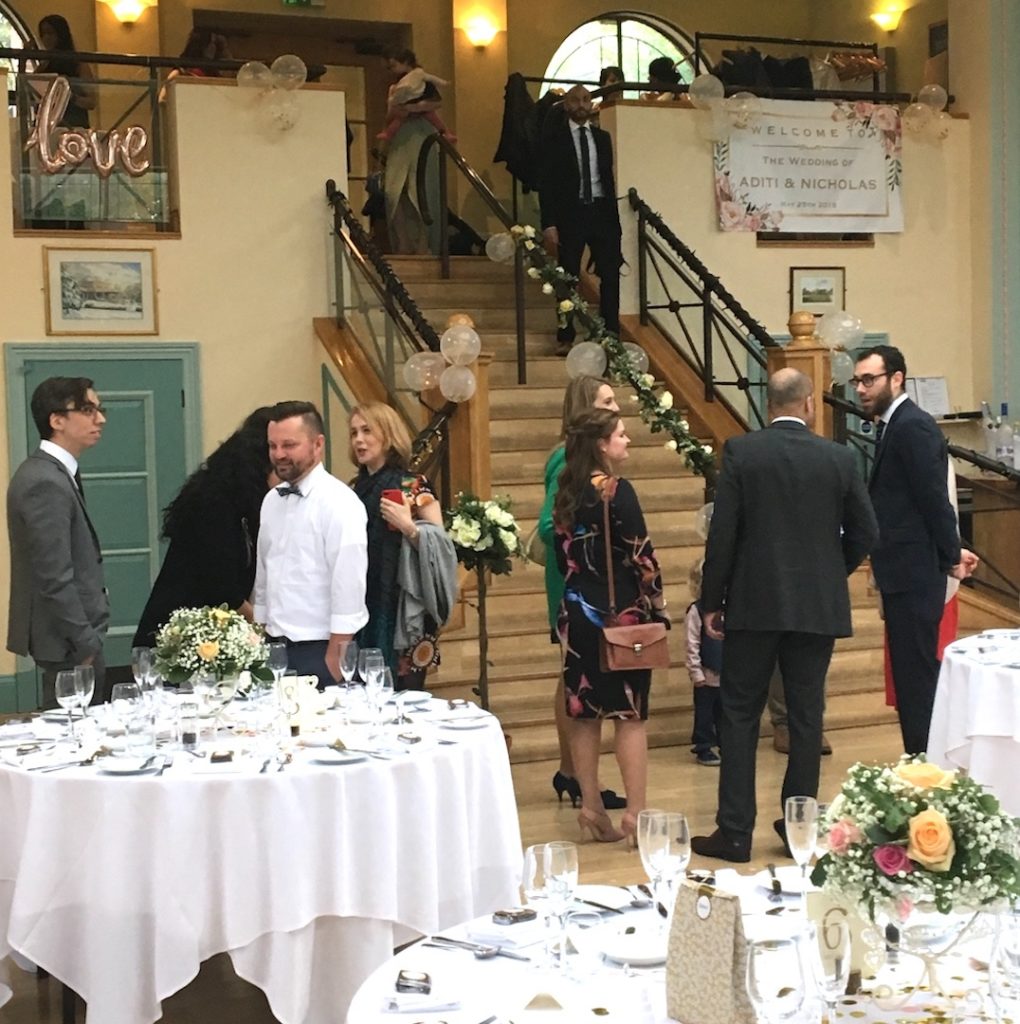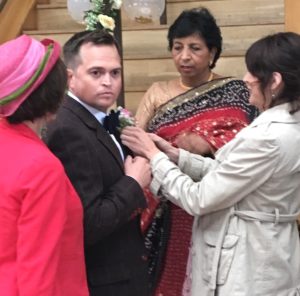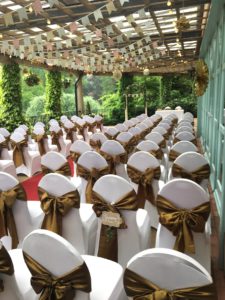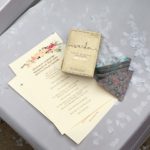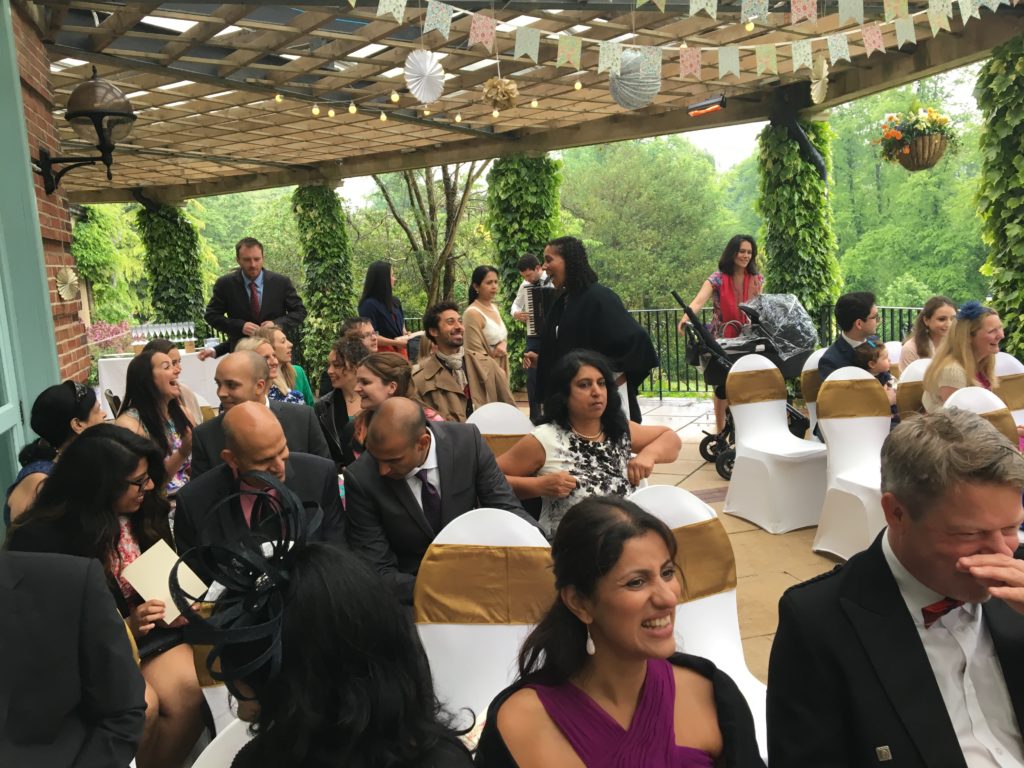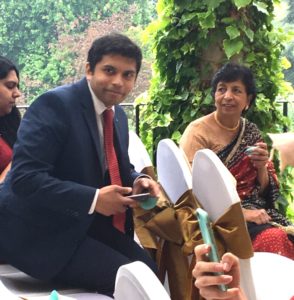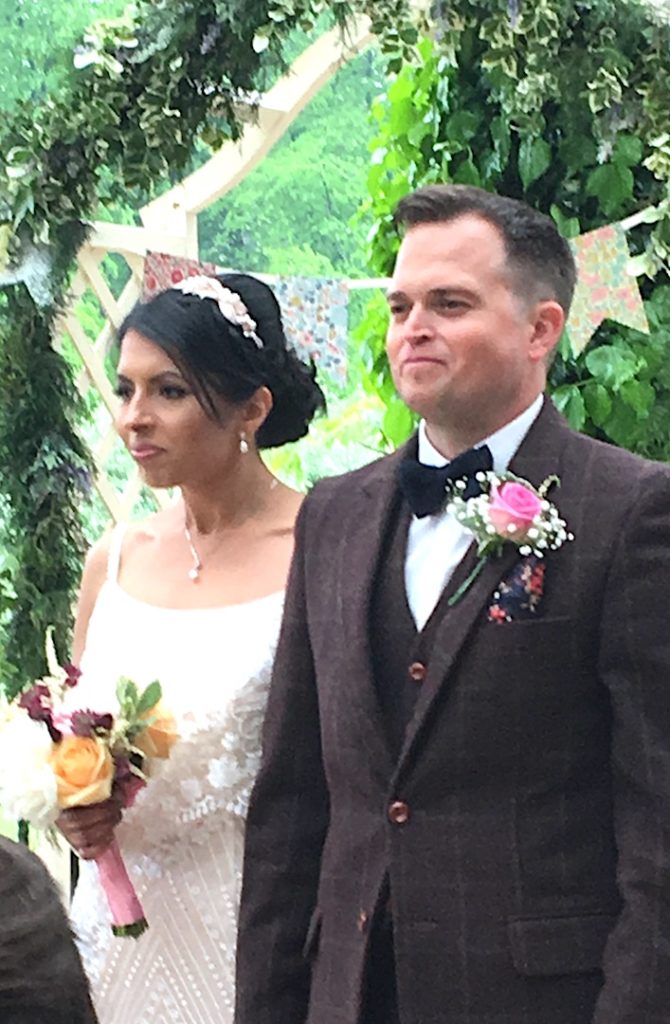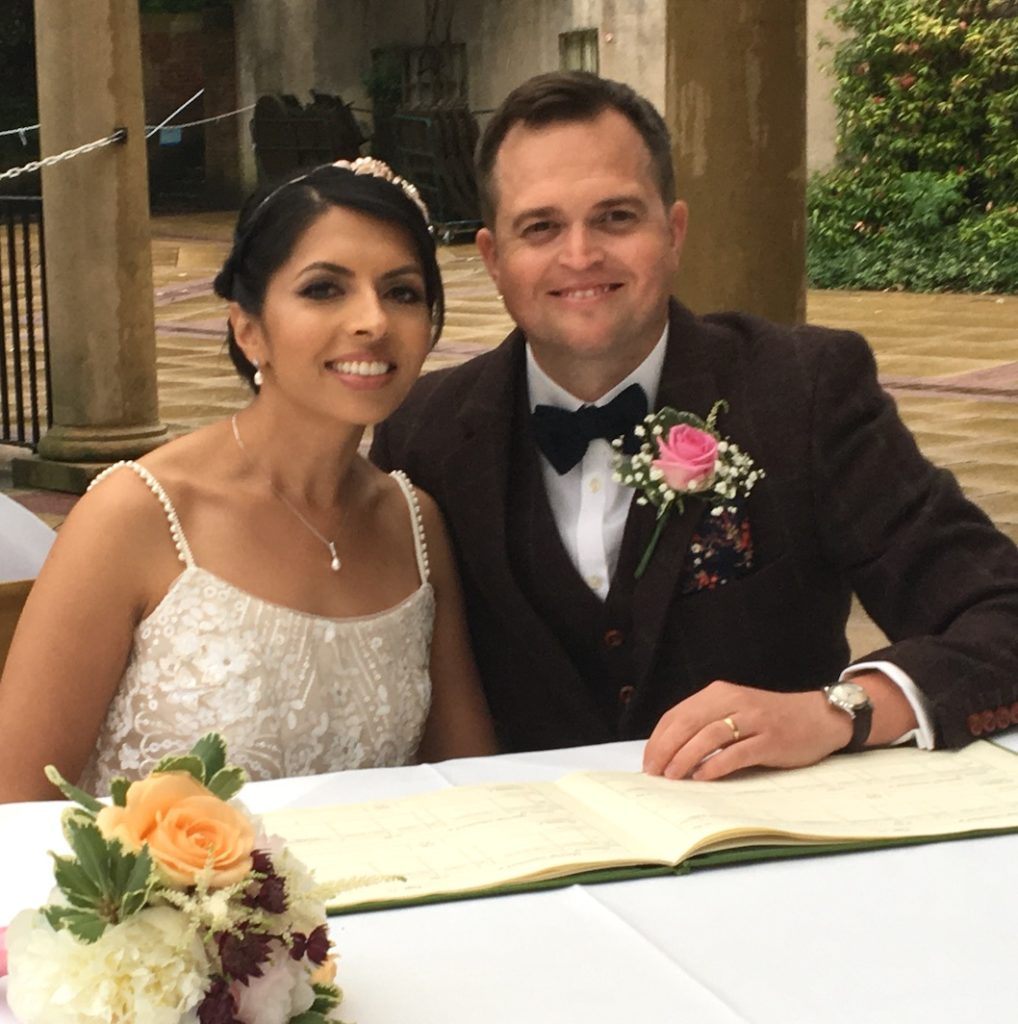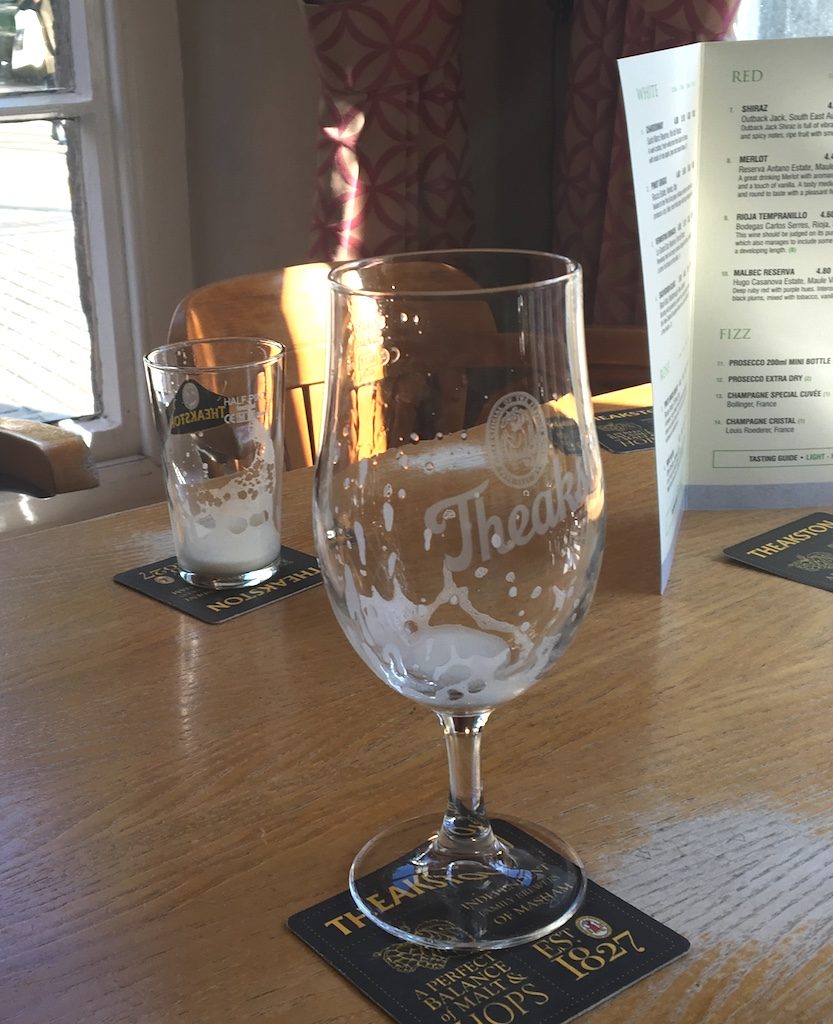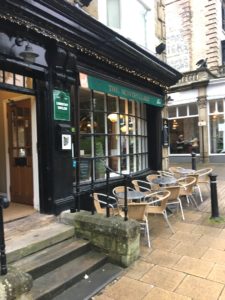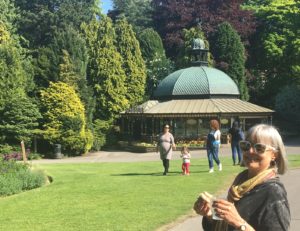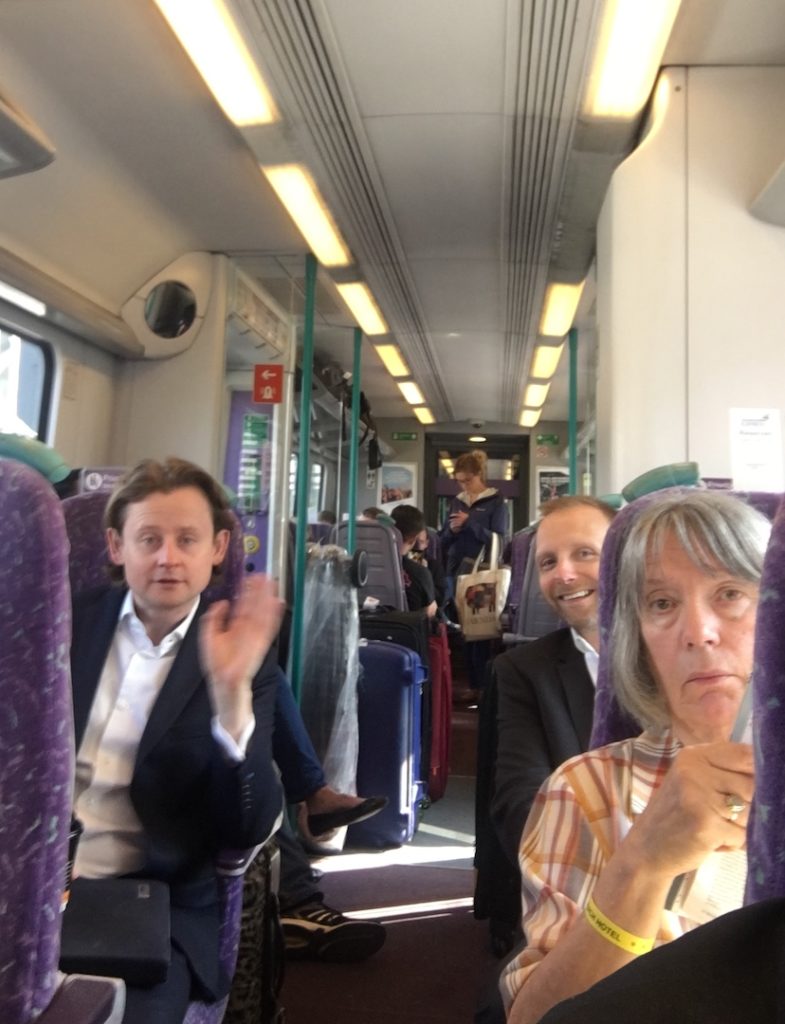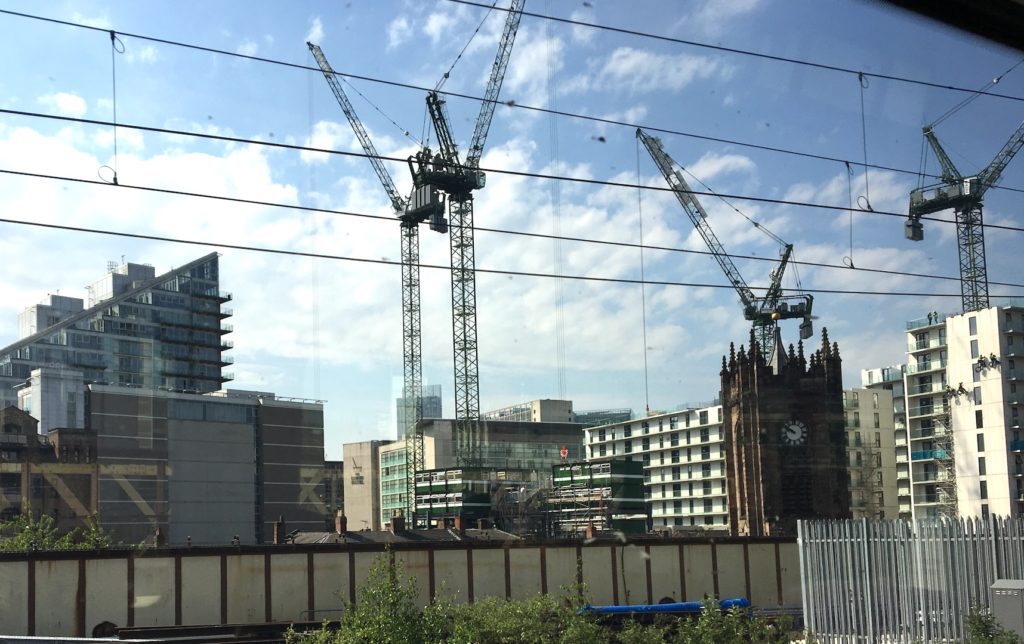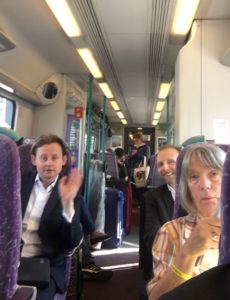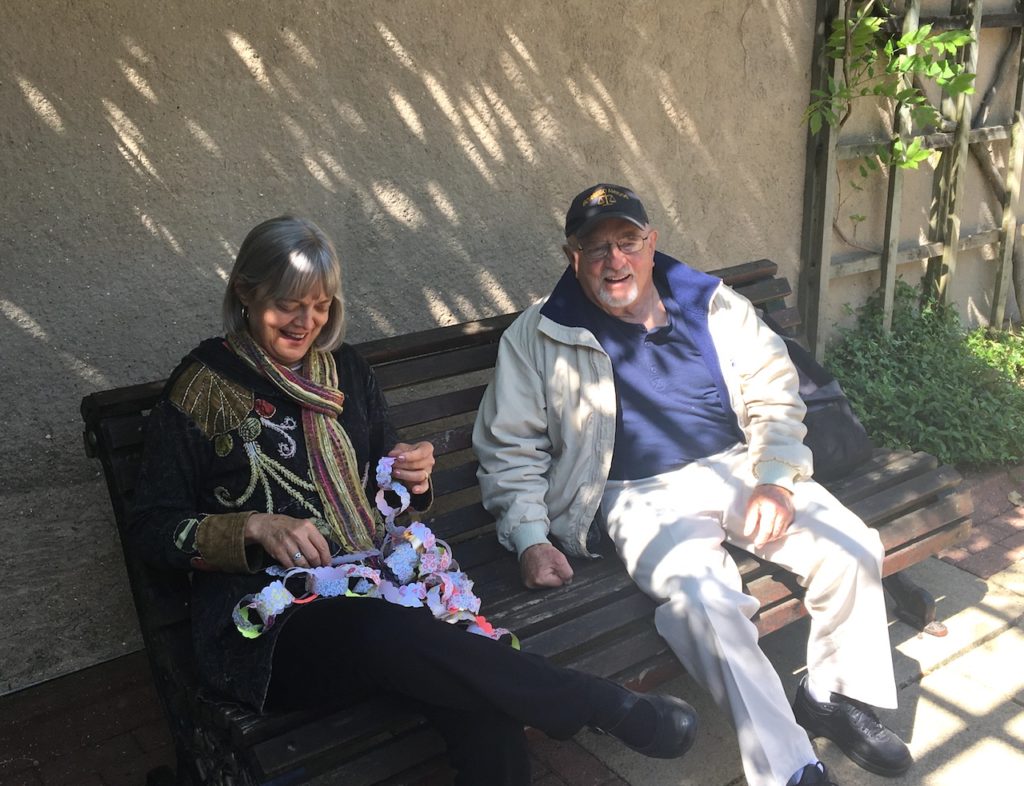Friday dawned gray, cool and rainy, a classic May day in Northern England. We walked over to The Sun Pavilion under umbrellas around 12:30 PM and mingled with family and friends. Rain, in Hindu tradition we learned, is a good omen on wedding day as it promises fertility and prosperity—in fact, a monsoon is thought to be perfect.
The ceremony took place outdoors on a covered porch. Attire was “English formal”, giving the men a clear advantage with their long pants and suit coats in the 50 F temps and stiff breeze, while the ladies scrambled for shawls and sweaters but mostly just endured the elements in slim-strapped dresses. A local civic official presided over the ceremony.
Iinteresting fact: English civil marriage ceremonies are strictly non-religious, so much so that a proposed poem containing the word “blessing” was nixed by the presiding official.
The male advantage ended with the signing of the marriage certificate, as the fathers of the bride and groom remained seated while the mothers signed the marriage certificate along side the bride and groom. Isn’t England a patrilineal society? Why were the dads left out? The answer was obvious—but only after it was explained to me: one’s mum is not in doubt, whereas one’s dad, well, do we ever know for sure???
The ceremony was forthright and brief, the prelude to hugs, happy chatter, champagne, dinner and dancing that carried on til midnight. One question remained: were Nick and Aditi REALLY married? With a Hindu wedding coming up in two days (and an Episcopal ceremony in San Diego in October), which ceremony would be the real deal??

